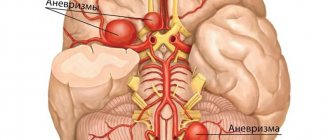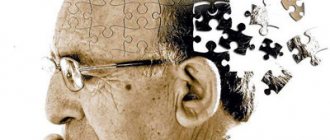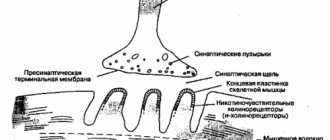Damage to the cerebellum can be caused by a variety of consequences. This is explained by the fact that it is connected with almost all parts of the human body, in particular with the nervous system. As a rule, numerous unpleasant symptoms and the appearance of problems with this organ are most often called cerebellar ataxia. It manifests itself in the form of coordination disorder, imbalance, etc. In this case, a person cannot stay in the same position for a long time.
Some of the symptoms of cerebellar damage can be detected with the naked eye. However, more complex hidden signs can be identified only with the help of special laboratory tests. The effectiveness of treatment for these pathologies depends on the causes of the lesions.
Main functions
The cerebellum does a huge amount of work. First of all, it maintains and distributes muscle tone, which is necessary to keep the human body in balance. Thanks to the work of this organ, a person can perform motor function. Therefore, when talking about the function and symptoms of cerebellar damage, the doctor first of all checks the person’s coordination. This is because this organ helps maintain and distribute muscle tone at the same time. For example, when a person bends his leg, he simultaneously tenses the flexor and relaxes the extensor.
In addition, the cerebellum distributes energy and minimizes contraction of the muscles that are involved in performing a particular job. In addition, this organ is necessary for motor learning. This means that during training or developing professional skills, the body remembers which muscle groups contract and tense.
If there are no symptoms of cerebellar damage and its functioning is normal, then in this case the person feels well. If at least one part of this organ suffers from damage, then it becomes more difficult for the patient to perform certain functions, or he simply cannot move.
ethnoscience
Proven recipes of alternative medicine allow you to stabilize and keep the body’s condition under control. It is necessary to select the optimal prescriptions with your doctor. Many herbs can have negative effects on humans if used incorrectly.
To resolve the cyst, spotted hemlock may be recommended. It combines with black elderberry and violet. The fee is applied if the formation begins to grow. The proportions, method of preparation and duration of therapy are determined by the doctor.
Drinking tea from viburnum, horsetail, and chokeberry allows you to control blood pressure, which is also important in this condition. The diet should be supplemented with celery, asparagus, vegetables, and fruits.
Alternative medicine can be used exclusively at the stage of remission, but not exacerbation.
Neurological pathology
Due to damage to this important organ, a huge number of serious ailments can develop. If we talk about neurology and symptoms of cerebellar damage, then it is worth noting the most important danger. Damage to this organ leads to poor circulation. The appearance of this pathology can lead to:
- Ischemic stroke and other heart diseases.
- Multiple sclerosis.
- Traumatic brain injury. In this case, the lesion does not always have to affect the cerebellum; it is enough if at least one of its connections is disrupted.
- Meningitis.
- Diseases of a degenerative type, as well as abnormalities caused in the nervous system.
- Intoxication.
- Overdose of certain medications.
- Vitamin B12 deficiency.
- Hydrocephalus of obstructive type.
In neurology, symptoms of cerebellar damage are quite common. Therefore, first of all, it is necessary to visit a specialist in this particular field.
Cause of cerebellar diseases
In this case, we can talk about injuries, congenital underdevelopment of this area, circulatory disorders, or the consequences of long-term drug use. This can also happen due to toxin poisoning.
If a patient is diagnosed with a congenital defect in the development of this organ, then in this case we are talking about the fact that the person suffers from a disease called Marie's ataxia. This pathology refers to dynamic ailments.
Symptoms of damage to the cerebellum and pathways may indicate a stroke, injury, cancer, infections and other pathologies occurring in the nervous system. Similar illnesses are encountered by people who have had a fracture of the base of the skull or damage to the occipital region of the head.
If a person suffers from atherosclerotic vascular lesions, this can also provoke a disruption of the blood supply to the cerebellum. However, the list of all ailments does not end there. Damage to the carotid artery and vascular spasms, which turn into hypoxia, can also provoke a similar condition.
In addition, it should be taken into account that most often symptoms characteristic of cerebellar damage occur in older people. This is explained by the fact that their vessels lose elasticity over time and are affected by atherosclerosis and cholesterol plaques. Because of this, their walls cannot withstand strong pressure and begin to rupture. Such hemorrhage provokes tissue ischemia.
What is the danger?
Small seals do not pose a danger to human life and health. The problem is that in most cases they continue to grow and begin to put pressure on the brain tissue. This provokes the following complications:
Complete or partial paralysis cannot be ruled out.
- blood circulation deteriorates, insufficient oxygen reaches the cerebellum;
- irreversible processes occur that affect speech, vision, hearing, and coordination of movements;
- complete or partial paralysis cannot be ruled out, in which it is impossible to restore lost functions;
- in the most severe cases, the pathology leads to the death of the patient.
Sometimes spontaneous rupture of the capsule membranes occurs, which leads to sepsis and a purulent inflammatory process in the cerebrospinal fluid. There is also a risk of internal bleeding, paralysis and death.
A cerebellar cyst in a newborn child (if it does not resolve) causes developmental disorders and delays in many functions.
Signs of pathology
If we talk about the main symptoms of damage to the cerebellum of the brain, then among them is ataxia, which can manifest itself in different ways. However, most often a person’s head and whole body begin to tremble, even with a calm body position. Muscle weakness and poor coordination of movements appear. If one of the hemispheres of the brain is damaged, then the person’s movements will be asymmetrical.
Patients also suffer from tremors. In addition, there are severe problems in the process of flexion and extension of the limbs. Many experience hypothermia. If symptoms characteristic of cerebellar damage occur, the patient may experience motor disturbances. In this case, when moving towards a certain goal, a person begins to perform pendulum actions. In addition, a problem with the cerebellum can cause hyperreflexia, gait disturbances, and severe changes in handwriting. It is also worth considering the types of ataxia of this organ.
Complications and consequences
The consequences of cerebellar atrophy are devastating for a sick person, since irreversible pathological processes occur during the rapid development of the disease. If you do not support the patient’s body at the initial stage of the disease, the end result may be complete degradation of the person as an individual - this is socially and a complete inability to take adequate actions - physiologically.
At a certain stage of the disease, the process of cerebellar atrophy cannot be reversed, but it is possible to freeze the symptoms, as it were, preventing them from progressing further.
A patient with cerebellar atrophy begins to feel uncomfortable:
[42], [43], [44], [45], [46], [47], [48]
Static-locomotor
In this case, disturbances in a person’s walking are most pronounced. Any movement brings severe stress, which causes the body to become weaker. In this case, it is difficult for a person to be in a position where the heels and toes of the feet are in contact. Difficulty falling forward, backward, or swaying to the sides. In order to take a stable position, a person needs to spread his legs wide apart. There is a very unsteady gait and outwardly the patient who exhibits symptoms of cerebellar damage resembles a drunk. When turning, it can skid to the side, even falling.
To diagnose this pathology, several tests must be performed. First of all, you need to ask the patient to walk in a straight line. If he shows the first signs of static-locomotor ataxia, he will not be able to perform this simple procedure. In this case, he will begin to deviate too much in different directions or spread his legs too wide.
Also, in order to identify the main symptoms of cerebellar damage, additional tests are performed at this stage. For example, you can ask the patient to stand up sharply and turn 90° to the side. A person whose cerebellum is damaged will not be able to perform this procedure and will fall. With such a pathology, the patient also cannot move with an extended step. In this case, he will dance, and the body will begin to lag slightly behind the limbs.
In addition to obvious problems with gait, there is a strong contraction of muscles when performing even the simplest movements. Therefore, in order to determine this pathology, you need to ask the patient to stand up sharply from a lying position. At the same time, his arms should be crossed on his chest. If a person is healthy, then his muscles will contract synchronously, and he will be able to sit down quickly. When ataxia occurs and the first symptoms of cerebellar damage occur, it becomes impossible to simultaneously strain the hips, torso and lower back. A person will not be able to get into a sitting position without the help of his hands. Most likely the patient will simply fall backwards.
You can also ask the person to try bending backwards while standing. At the same time, he must throw back his head. If a person is in a normal state, then in this case he will involuntarily bend his knees and straighten in the hip area. With ataxia, such flexion does not occur. Instead, the person falls.
Dynamic cerebellar ataxia
In this case, we are talking about problems with the smoothness and dimension of human movements. This type of ataxia can be unilateral or bilateral, depending on which hemispheres are affected. If we talk about what symptoms are observed with damage to the cerebellum and the manifestation of dynamic ataxia, they are similar to those described above. However, if we are talking about unilateral ataxia, then in this case the person will have problems moving or performing test tasks only in the right or left side of the body.
To identify the dynamic form of pathology, it is worth paying attention to some features of human behavior. First of all, he will experience severe trembling in his limbs. As a rule, it intensifies by the time the patient completes the movement. When in a calm state, a person looks absolutely normal. However, if you ask him to take a pencil from the table, at first he will stretch out his hand without any problems, but as soon as he begins to take the object, his fingers will begin to tremble violently.
When determining the symptoms of cerebellar damage, diagnosis includes additional tests. With the development of this pathology, patients experience so-called overshooting and overshooting. This is explained by the fact that a person’s muscles begin to contract disproportionately. The flexors and extensors work much harder. As a result, a person cannot fully perform the simplest actions, for example, putting a spoon in his mouth, buttoning a shirt, or tying a knot in his shoelaces.
In addition, changes in handwriting are a clear sign of this disorder. Most often, patients begin to write large and unevenly, and the letters become zigzag.
Also, when determining symptoms of damage to the cerebellum and pathways, it is worth paying attention to how a person speaks. With the dynamic form of the disease, a sign appears, which in medical practice is called scanned speech. In this case, the person speaks as if in jerks. It divides phrases into several small fragments. In this case, outwardly the patient looks as if he is broadcasting something to a large number of people from the podium.
Other phenomena characteristic of this disease are also observed. They also concern patient coordination. Therefore, the doctor conducts a number of additional tests. For example, in a standing position, the patient should straighten and raise his arm to a horizontal position, move it to the side, close his eyes and try to touch his nose with his finger. In normal conditions, it will not be difficult for a person to perform this procedure. If he has ataxia, he will always miss.
You can also try asking the patient to close his eyes and touch the tips of his two index fingers to each other. If there are problems in the cerebellum, the patient will not be able to match the limbs in the desired way.
Diagnostics
Considering the symptoms of cerebellar damage and research methods, it is worth noting that in case of any disturbances in the functioning of the brain, you must immediately contact a neurologist. He conducts a series of tests in order to clarify how a person’s superficial and deep reflexes work.
If we talk about hardware studies, it may be necessary to perform electronystagmography and vestibulometry. A general blood test is required. If a specialist suspects an infection in the cerebrospinal fluid, a lumbar puncture is performed. Markers of stroke or inflammation need to be checked. Additionally, an MRI of the brain may be required.
Diagnostic measures
First, the neurologist conducts a reflex study to identify the location of the central nervous system lesion.
Also prescribed:
- MRI of cerebellar atrophy allows you to clarify in detail all the changes in the cortex and subcortex. The diagnosis can be determined in the early stages of the disease. This method is the most reliable.
- CT gives a complete picture of changes after strokes, identifies their cause, and indicates the location of cystic formations, i.e., all the causes of tissue trophic disorders. Prescribed for contraindications to MRI.
- Ultrasound examination is used to diagnose extensive brain damage due to strokes, TBI, trauma and age-related changes. Can identify the area of atrophy and determine the stage of the disease.
Treatment
The success of therapy directly depends on the causes of this pathology. Therefore, speaking about the symptoms and treatment of cerebellar lesions, it is worth considering the most common cases.
If the disease is accompanied by an ischemic stroke, then lysis of blood clots is required. The specialist also prescribes fibrinolytics. To prevent the formation of new blood clots, antiplatelet agents are prescribed. These include Aspirin and Clopidogrel. Additionally, you may need to take metabolic medications. These include Mexidol, Cytoflavin and others. These funds help improve metabolic processes in brain tissue.
In addition, in order to prevent another stroke, it is necessary to take a course of medications that reduce the amount of cholesterol in the blood.
If, when studying the symptoms and causes of damage to the cerebellum, the doctor determines that the patient is suffering from neuroinfections (for example, encephalitis or meningitis), then treatment with antibiotics is required.
Problems caused by intoxication in the body can be solved with the help of detoxification therapy. However, for this it is necessary to clarify the type and characteristics of the poison. In difficult situations, immediate measures must be taken, so the doctor performs forced diuresis. In case of food poisoning, it is enough to perform gastric lavage and take sorbents.
If a patient is diagnosed with cancer, then everything depends on its stage and type of pathology. As a rule, radiation and chemotherapy are prescribed for treatment. In some situations, surgery may be required.
Experts also prescribe drugs that can improve blood flow (for example, “Caviton”), vitamin complexes, anticonvulsants and drugs that strengthen muscle tone.
Physical therapy and massage sessions have a beneficial effect. Thanks to a special set of exercises, it is possible to restore muscle tone. This helps the patient return to normal faster. Physiotherapeutic measures are also carried out (therapeutic baths, electrical stimulation, etc.).
Also, when considering the symptoms, causes and treatment of cerebellar damage, it is worth paying attention to several more brain pathologies encountered in medical practice.
Betten's disease
This pathology belongs to the category of hereditary diseases. It doesn't happen that often. In this case, a person exhibits all the signs of cerebellar ataxia, which are recorded in babies in the first 12 months of life. Serious problems in coordination appear, the child cannot focus his gaze, and muscle hypotonia appears.
Some children begin to hold their heads independently only by the age of 2-3 years, and later begin to speak and walk. However, in most cases, after a few years, the baby’s body adapts to the pathology, and the signs of cerebellar damage cease to be obvious.
Alcoholic cerebellar degeneration
A similar pathology appears against the background of chronic intoxication with alcoholic beverages. In this case, the cerebellar vermis is affected. First of all, when diagnosing the disease, patients experience problems with limb coordination. Sight and speech are impaired. Patients suffer from severe memory loss and other problems with brain activity.
Based on this, it becomes obvious that problems with the cerebellum appear against the background of other pathologies. Although neurological problems most often lead to ataxia, this is not the only factor that affects a person’s health. Therefore, it is important to promptly pay attention to the symptoms, contact a qualified specialist and conduct a diagnosis. Simple tests can be performed at home. However, after this you need to consult a doctor, identify the main cause of the unpleasant disease and begin immediate treatment with drugs and physiotherapy.
Prevention and prognosis
Subatrophy has an unfavorable prognosis. It is impossible to completely cure the disease. The patient's life can be normalized thanks to the support of relatives and the appointment of effective treatment.
A serious consequence of the pathology is the patient’s inability to self-care. The patient develops drunken gait syndrome, so he feels unsure of his movements. After a certain time, the patient degrades in society. It is difficult for the patient to perform basic movements.
There is no specific prevention of the disease. It is impossible to prevent the occurrence of the disease, since its causes have not been fully established in modern medicine. With the help of modern medications, it is possible to stop the progression of the disease.
An active lifestyle and proper nutrition can reduce the risk of developing pathology. Patients are also advised to give up bad habits.
Cerebellar atrophy is expressed in destructive, neurodegenerative processes, which leads to a decrease in the volume of nervous tissue and disruption of the functions of the brain. Sporadic (spontaneously occurring) forms of cerebellar atrophy are manifested by gait disturbances with a tendency to slow progression, limb ataxia (poorly coordinated movements of the arms and legs), nystagmus, and dysarthria (impaired pronunciation).











